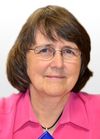
By Joanne Lynn
Most of us now reading this will get the extraordinary privilege of being able to live into old age. For nearly all of human history, few people lived to be old, and even fewer lived long with serious disabilities. Now, most of us will have a substantial period of increasing disability at the end of long lives. The experience of people with serious illnesses and disabilities in old age (“frail elders”) and the experience of caregiving for an elderly person are profoundly shaped by the availability of supportive resources and appropriate medical care in the local community.
For example, some communities have ready availability of services such as home-delivered meals and wheelchair-adapted housing, while others have exceedingly long waiting lists for often-inadequate services. Some communities have developed substantial geriatric medical care, including house calls and telemedicine, while others rely on the hospital for every complication. Little is known about the experiences of elders and their caregivers in the usual community, since very little is captured about the community’s experience of this part of life in conventional surveys and reports. Many health systems and communities like to take on the responsibility of monitoring and improving the care system for disabled elders and their caregivers, rather than just offering rescue services for serious and often preventable complications; but they find that the reliable metrics needed to guide improvement are unavailable.
We’ve given some thought to potential ways to meet these needs, and here’s what seems possible and affordable in order to make a measurement dashboard to guide improving a community’s eldercare system. First, one could mine large existing databases, such as Medicare and Medicaid claims, Outcome and Assessment Information Set (OASIS) home health agency assessments, and Minimum Data Set (MDS) nursing home assessments. Then, one could monitor demand for and performance of key service providers, such as wait lists for home-delivered meals or availability of wheelchair-adapted housing. Third, the community could interview family and caregivers for a sample of elderly decedents and describe the experience of the last couple of years. This strategy would sample those who received few services and demanded little, and it would allow exploration of critical issues such as bankrupting elders and families and providing culturally appropriate services.
Our last data source, learning by aggregating care plans, is a bit beyond current implementation, but it could enable the opportunity for substantial monitoring and improvement efforts. We envision having records with the key elements of service needs for nearly all frail and disabled elders in a geographic area. Being able to combine them electronically would yield rich data in order to summarize needs, services provided, gaps, oversupply, and quality problems—both for the whole community and by mapping to clarify the locus of some issues. If, for example, the community has 500 elderly people so disabled that they should have medical care at home, and the community had current capacity only for 100, then one could identify and map the areas of need and examine the current and potential supply options to address the gaps. Furthermore, with data on demand and supply for a dozen important service needs, the community would be able to set priorities for investments in public resources. You can read more about how this kind of community management would work in our book.
Of course this work requires adequate care plans, preferably in a format that allows electronic identification of the plan and its elements. At present, too few elders living with advanced illnesses have reasonably comprehensive care plans created, and even fewer have them written down, even in narrative form. We’ve also realized that shortages of, or quality shortcomings with, important services are addressed explicitly or noted in the record. Thus, a person who really would do better with door-to-door wheelchair transportation and lives in a community lacking this service will instead have the substitute arrangements in his care plan, such as “transportation relies on the availability of his son-in-law Tom, so appointments need to revolve around Tom’s availability.” The shortage of appropriate transportation options might be inferred but is not likely to be explicitly stated. Similarly, the lack of respite for a caregiver will not be noted. Therefore, additional work is needed to develop comprehensive care planning, which includes collaboration with the regulatory and technical bodies that are working on the standards for care planning.
With funding from the Gordon and Betty Moore Foundation, we are working to develop the methodology to do care plan aggregation. We are actively seeking communities that would like to help us develop these methods by letting us try it out with their population. We want to know what information from care plans you think would be most relevant and how you’d want to act on that knowledge, what entity in your community might be able and willing to act, and whether it is worthwhile to push for better and more standardized care plans.
Please email us at [email protected] if you know of or belong to an organization that might be able to work with us.